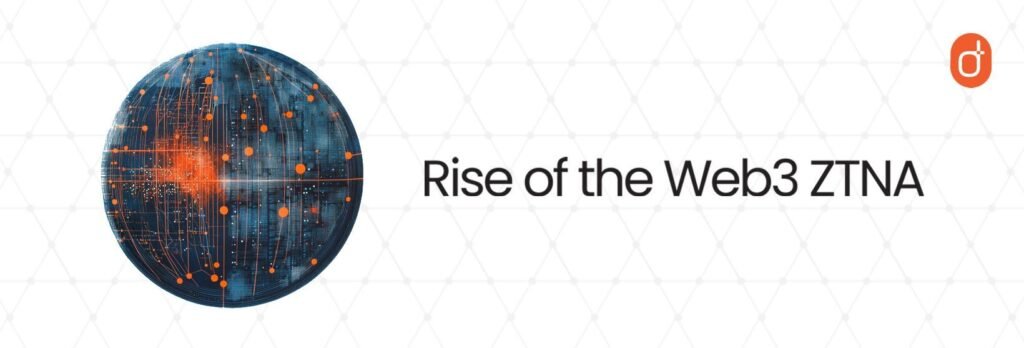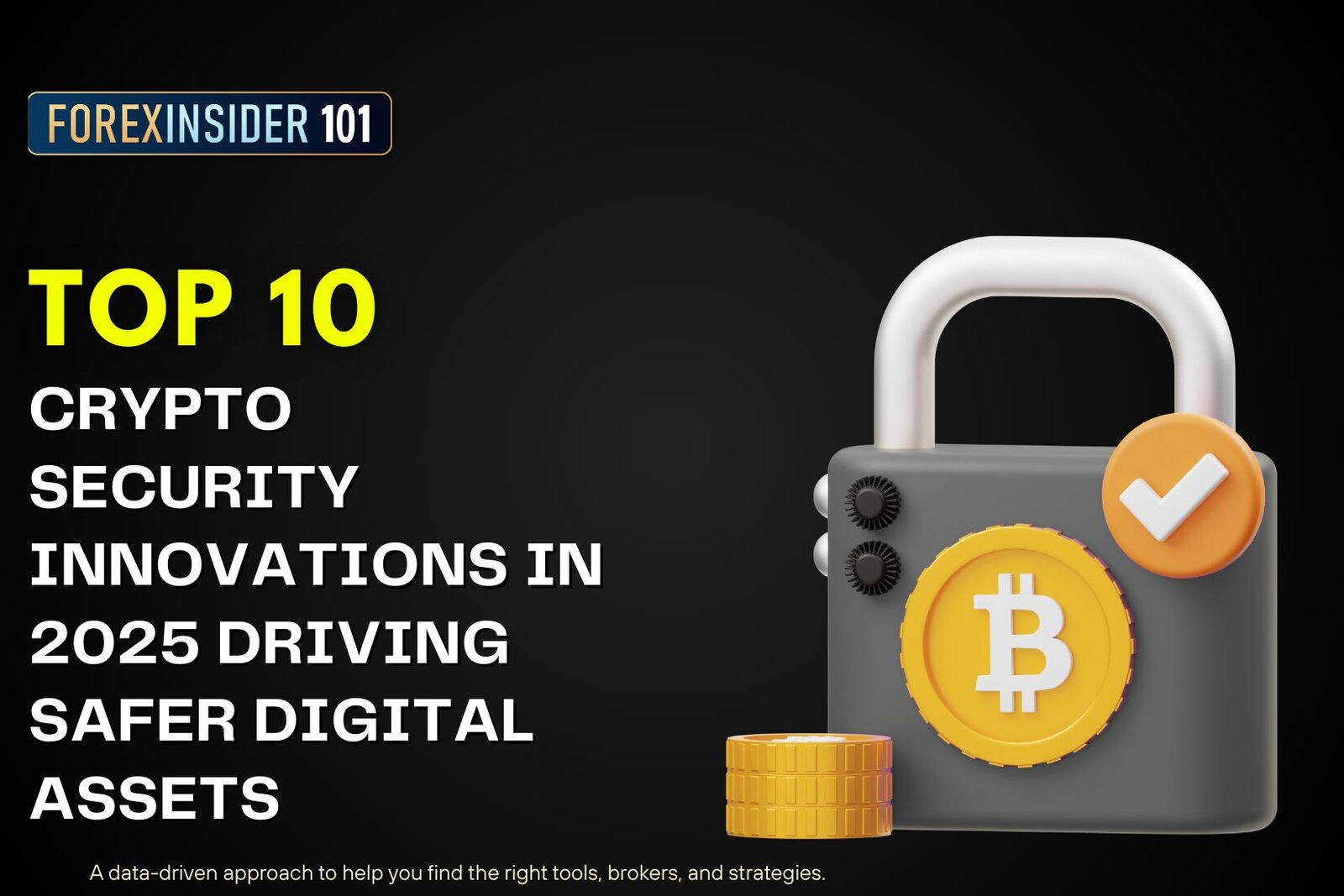Top 10 Crypto Security : Crypto adoption in 2025 is at an all-time high, but with growth comes risk. Global regulators and cybersecurity experts estimate that the first half of 2025 alone saw over $3.1 billion in stolen digital assets, with sophisticated exploits ranging from AI-generated phishing schemes to multi-sig wallet vulnerabilities and insider fraud. These losses underscore the critical need for stronger protection.
At the same time, the industry is not standing still. Developers, enterprises, and policymakers are introducing advanced measures that blend artificial intelligence, cryptography, behavioral analysis, and decentralized frameworks to combat threats. These are not just incremental updates but fundamental shifts in how blockchain systems handle risk. The following Top 10 Crypto Security Innovations in 2025 reveal how digital assets are being shielded in an era of both innovation and turbulence.
1. Top 10 Crypto Security : Quantum-Resistant Cryptography
Quantum computing is no longer a distant hypothetical but a clear and present concern for the cryptographic foundations of blockchain. Algorithms like RSA and ECC, which secure most cryptocurrencies, could be cracked by sufficiently powerful quantum systems. In 2025, the industry has accelerated the adoption of post-quantum cryptography (PQC), a family of encryption methods resistant to quantum threats.
Projects are now incorporating lattice-based cryptography, secure multi-party computation (MPC), and NIST-approved PQC standards into wallets, exchanges, and custody services. These methods ensure that assets remain safe even if quantum machines become commercially viable sooner than expected. For institutional investors, quantum-resistant blockchains are emerging as the gold standard in long-term asset protection.
2. AI-Powered Defense Systems

Source: Linkedin
Artificial intelligence has given hackers new attack strategies, from AI-crafted phishing emails to automated vulnerability scanning. But defenders are responding with equal sophistication. In 2025, AI-powered security systems have become a cornerstone of crypto defense.
These systems analyze massive amounts of on-chain data in real time, flagging anomalies like unusual wallet activity, rapid liquidity withdrawals, or sudden contract interactions. Some platforms even employ automated response mechanisms, freezing suspicious transactions before funds leave an ecosystem. With machine learning constantly evolving, these systems improve over time, creating a predictive defense layer that adapts as threats change.
3. Zero Trust Security in Web3

Source: Diode
The days of perimeter-based security are over. In decentralized finance and Web3 applications, the principle of Zero Trust — “never trust, always verify” — is increasingly the default. Unlike traditional systems where users gain broad access after initial verification, Zero Trust enforces continuous validation for every transaction, node, and device.
In 2025, Zero Trust is being deployed across DAOs, custodial services, and decentralized exchanges. It not only mitigates risks from compromised keys and insider fraud but also satisfies growing regulatory expectations. For blockchain infrastructure providers, this model is becoming an essential part of scaling secure ecosystems in the cloud and on IoT-connected devices.
4. Blockchain as a Cybersecurity Backbone

Source: Pixelplex
Blockchain itself is turning into a tool for security beyond crypto transactions. Its immutable, tamper-proof records are now being applied to protect software supply chains, monitor compliance, and track digital asset provenance. In cybersecurity investigations, blockchain-based audit trails are being used to establish transparency and verify events without relying on centralized logs that could be altered.
Some initiatives extend this innovation into sustainability and green compliance, using blockchain to secure carbon credit tracking and renewable energy validation. This dual role — security and transparency — is positioning blockchain not just as a system to be defended, but as an active defender in broader digital ecosystems.
5. Behavioral Biometrics and Identity Verification

Source: Paubox
Passwords are no longer enough in an environment where phishing attacks bypass two-factor authentication and insiders compromise private keys. In 2025, crypto platforms are adopting behavioral biometrics to continuously authenticate users. This includes signals like typing rhythm, mouse movement, wallet interaction speed, and even how a user signs blockchain transactions.
Combined with decentralized identity (DID) frameworks, these systems strengthen KYC and AML compliance without compromising user privacy. Instead of static login credentials, authentication becomes dynamic and adaptive, reducing the likelihood of unauthorized access even when devices are compromised.
6. Next-Generation Smart Contract Security
Smart contracts remain one of the most targeted parts of the crypto ecosystem, and 2025 is seeing a surge of innovations to secure them. Beyond traditional audits, projects are experimenting with AI-enhanced contracts capable of self-monitoring and even auto-patching minor vulnerabilities. Formal verification — a mathematical guarantee of correctness — is also becoming a mainstream requirement for major DeFi protocols.
To add further resilience, on-chain insurance pools and automated liquidity protection systems are being integrated. These mechanisms ensure that even if a vulnerability is exploited, the financial damage can be contained and compensated, restoring confidence in decentralized finance platforms.
7. Decentralized Identity and Privacy Enhancements

Source: Emurgo Africa
The tension between privacy and compliance has long been a sticking point in crypto. In 2025, decentralized identity (DID) solutions are bridging that gap. By allowing users to hold and control encrypted identity credentials, they enable privacy-preserving authentication while still meeting regulatory standards like GDPR and CCPA.
Advanced zero-knowledge proof (ZKP) systems allow users to prove attributes — for example, that they are over 18 or located in a permitted jurisdiction — without disclosing their full identity. This dual layer of privacy and compliance is transforming login systems and transaction authentication across the crypto sector.
8. Securing Cross-Chain Bridges

Source: Superagi
Cross-chain interoperability is vital for liquidity and adoption, yet it has also been the single largest attack vector. In 2025, developers are addressing this vulnerability with standardized cross-chain security protocols, shared audits, and real-time monitoring systems.
By harmonizing standards across ecosystems, bridges are less fragmented and easier to defend. Additionally, multi-chain insurance systems are emerging, providing coverage against potential exploits. This creates a more resilient multi-chain environment where assets can flow freely without introducing outsized risks.
9. Top 10 Crypto Security : Sustainable and Secure Mining Practices

Source: Samara
Security is not only digital but also infrastructural. In 2025, green mining practices are gaining momentum, pairing renewable energy with tamper-proof monitoring systems that prevent manipulation. Real-time monitoring ensures that mining rigs operate within secure parameters, reducing risks of sabotage or energy fraud.
Some projects go further by integrating carbon-tracking systems directly onto blockchains, ensuring that sustainability claims are cryptographically verifiable. This combination of eco-efficiency and security addresses two of the industry’s biggest criticisms at once.
10. Top 10 Crypto Security : Regulatory Integration and Global Standards

Source: GVS
Finally, no discussion of security is complete without governance. In 2025, regulatory bodies worldwide are increasingly aligned on security standards for digital assets. These cover custody solutions, stablecoin reserves, and transaction monitoring protocols.
Central Bank Digital Currencies (CBDCs) and enterprise blockchain systems are embedding compliance mechanisms into their core infrastructure. Meanwhile, global threat intelligence sharing between regulators, cybersecurity firms, and blockchain consortia is fostering a more collaborative defense strategy. Rather than fragmented responses, the industry is moving toward collective resilience.
Summary Table: Top 10 Crypto Security Innovations in 2025
| Innovation | Key Focus | Why It Matters in 2025 |
|---|---|---|
| Quantum-Resistant Cryptography | PQC, lattice cryptography | Protects assets from quantum attacks |
| AI-Powered Defense Systems | Machine learning monitoring | Stops exploits in real time |
| Zero Trust Security | Continuous verification | Mitigates insider & access risks |
| Blockchain as Cybersecurity Backbone | Immutable audit trails | Ensures tamper-proof compliance & transparency |
| Behavioral Biometrics | Continuous identity checks | Stronger KYC/AML without friction |
| Smart Contract Security | AI auto-patching, formal verification | Reduces losses from code exploits |
| Decentralized Identity (DID) | Self-sovereign ID, ZKPs | Balances privacy with regulation |
| Cross-Chain Security | Standardized bridge protocols | Secures interoperability & liquidity |
| Sustainable Mining | Renewable-powered rigs + tracking | Combines eco-efficiency with resilience |
| Regulatory Integration | Global security frameworks | Builds trust for mainstream adoption |
Conclusion – Top 10 Crypto Security
The sheer scale of attacks in 2025 underscores why security is now at the center of crypto’s evolution. But as the Top 10 Crypto Security Innovations show, this challenge is also driving remarkable creativity. From quantum-proof cryptography and AI defenses to sustainable mining and regulatory collaboration, the industry is redefining what safety means in a decentralized world.
The coming years will determine whether these innovations can outpace the attackers — but one thing is clear: crypto security in 2025 is no longer an afterthought. It is the foundation on which the future of blockchain adoption will stand.



